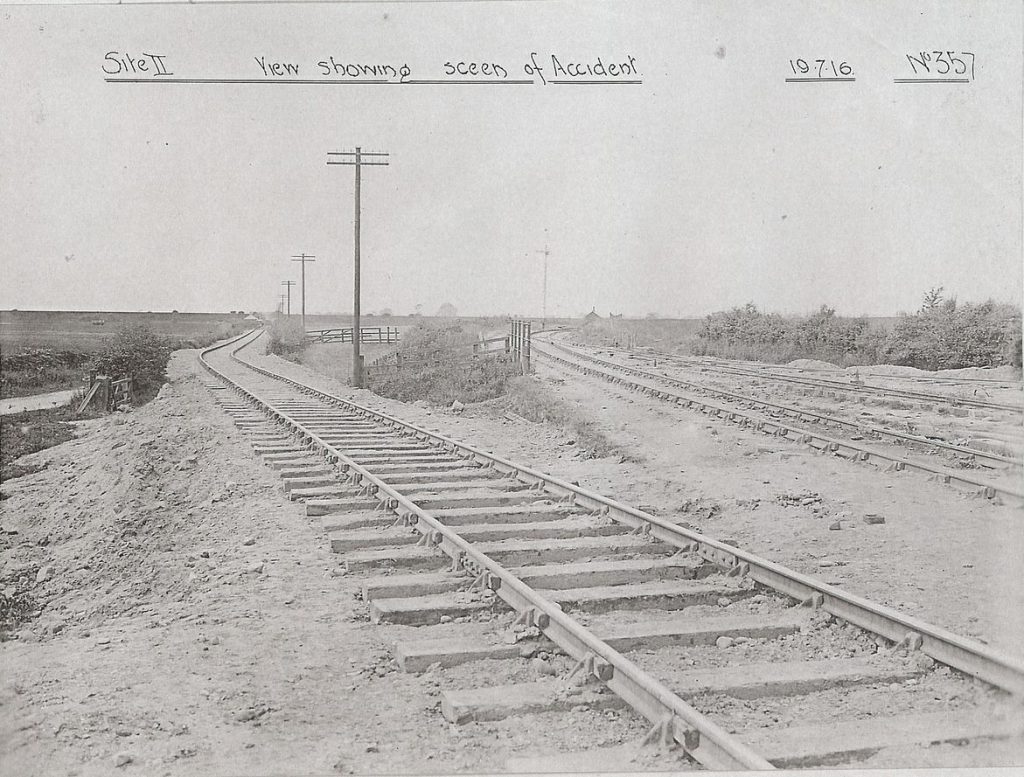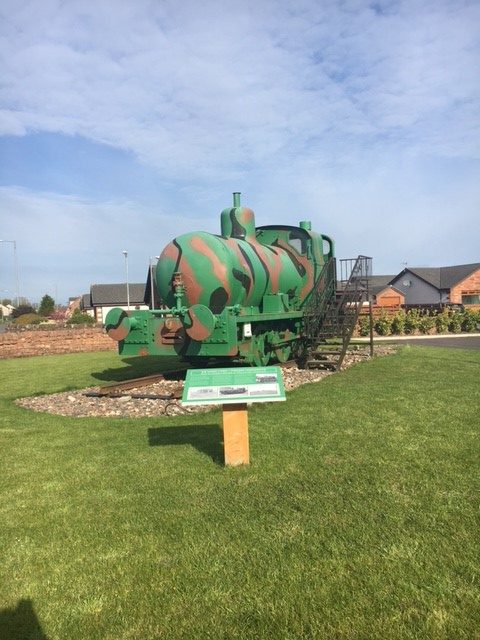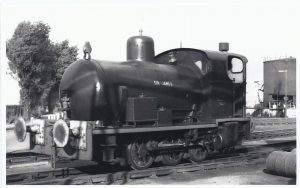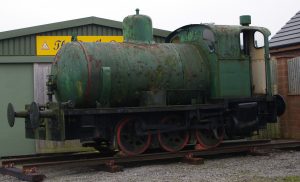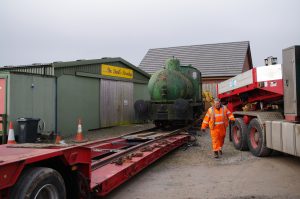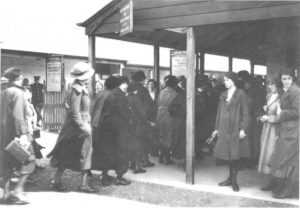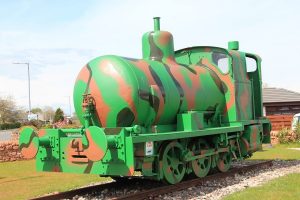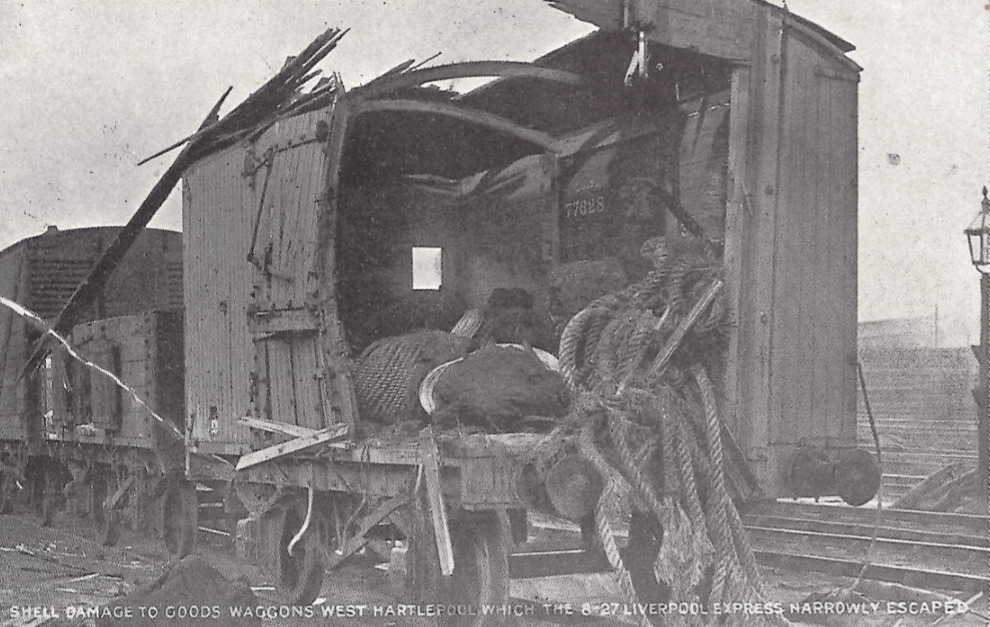
This postcard (from the Museum’s collection) shows an explosion within a railway wagon during World War One. Transporting munitions by rail was dangerous and at HM Factory Gretna (the factory which is the main focus of The Devil’s Porridge Museum) they took several precautions when transporting cordite including the use of fireless locomotives such as Sir James (now outside the Museum).

Although the railway stations were crowded at this time and both the West Hartlepool passenger station and goods station yard were hit, only rolling stock was damaged with no loss of life.
A fireless locomotive is a type of locomotive which uses reciprocating engines powered from a reservoir of compressed air or steam, which I filled at intervals from an external source. Typical usage was in industrial switching where a traditional locomotive was too noxious or risky, such as in a mine or a food or chemical factory (such as HM Factory Gretna). They were used at HM Factory Gretna as they were less likely to cause an explosion, this means that it was easier to transport the munitions across the Factory site without the risk of a huge chain explosion.
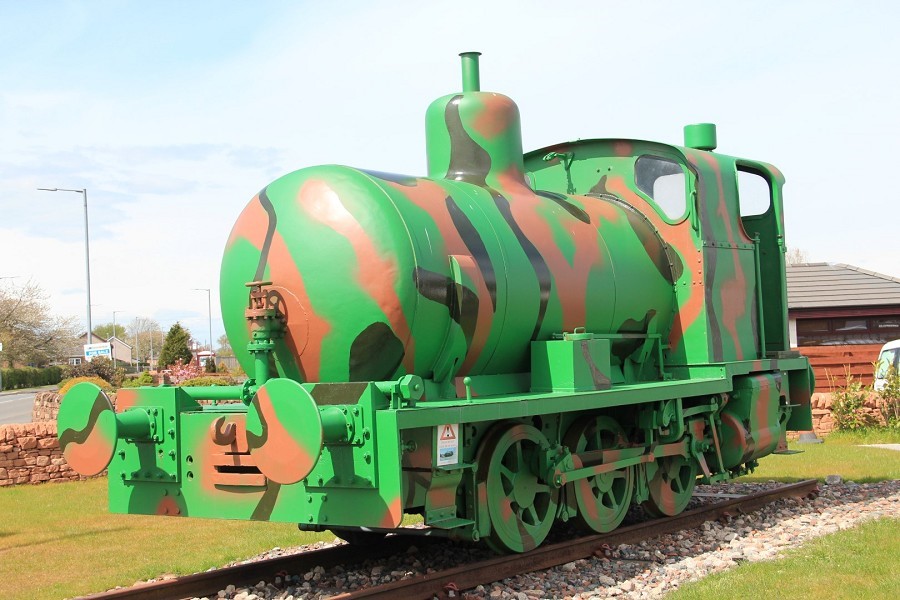
This photo is also from the Museum’s collection and shows HM Factory Gretna during its construction. It has the title “Site 2 showing the scene of the accident” and is dated July 19th 1916. It seems there may have been a railway accident at the Factory as well.
